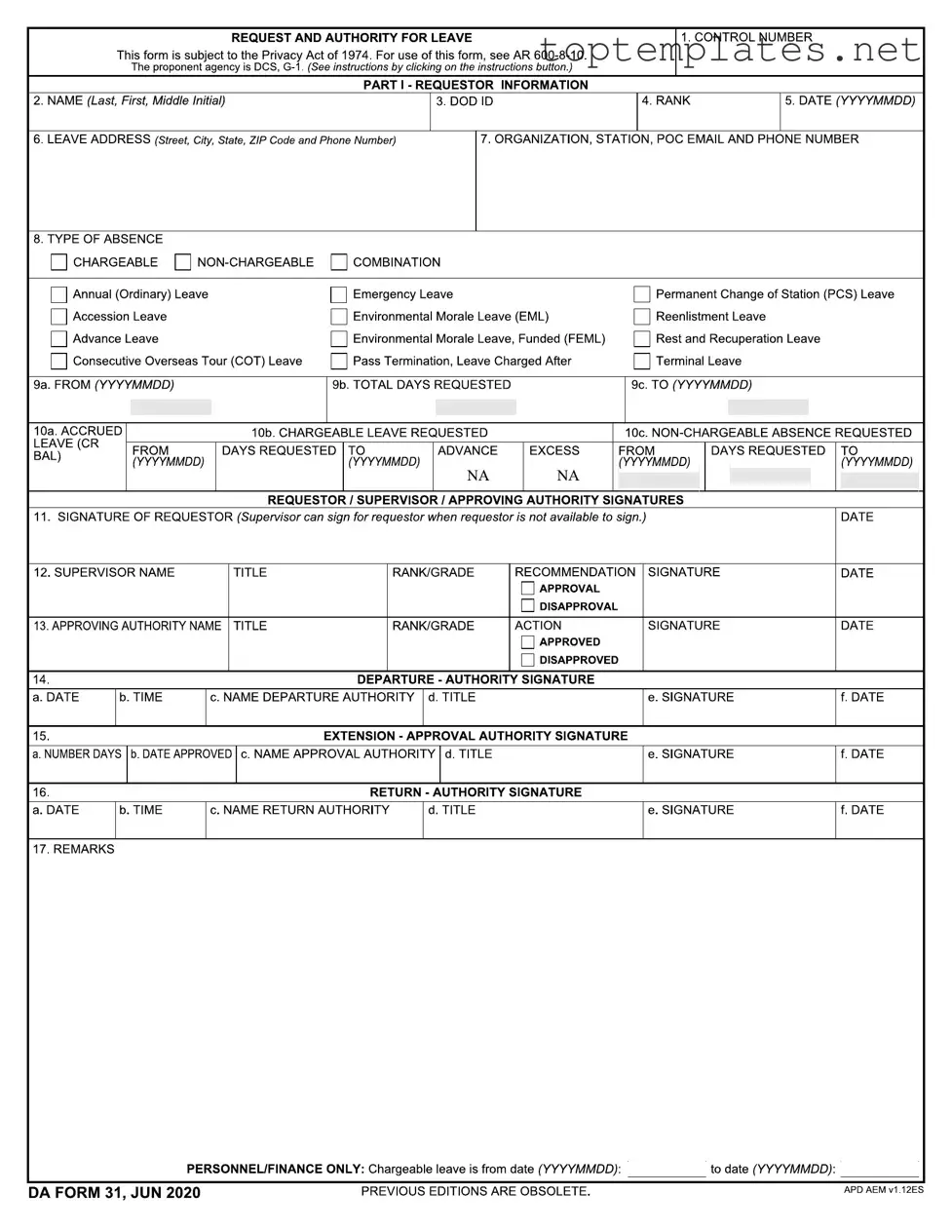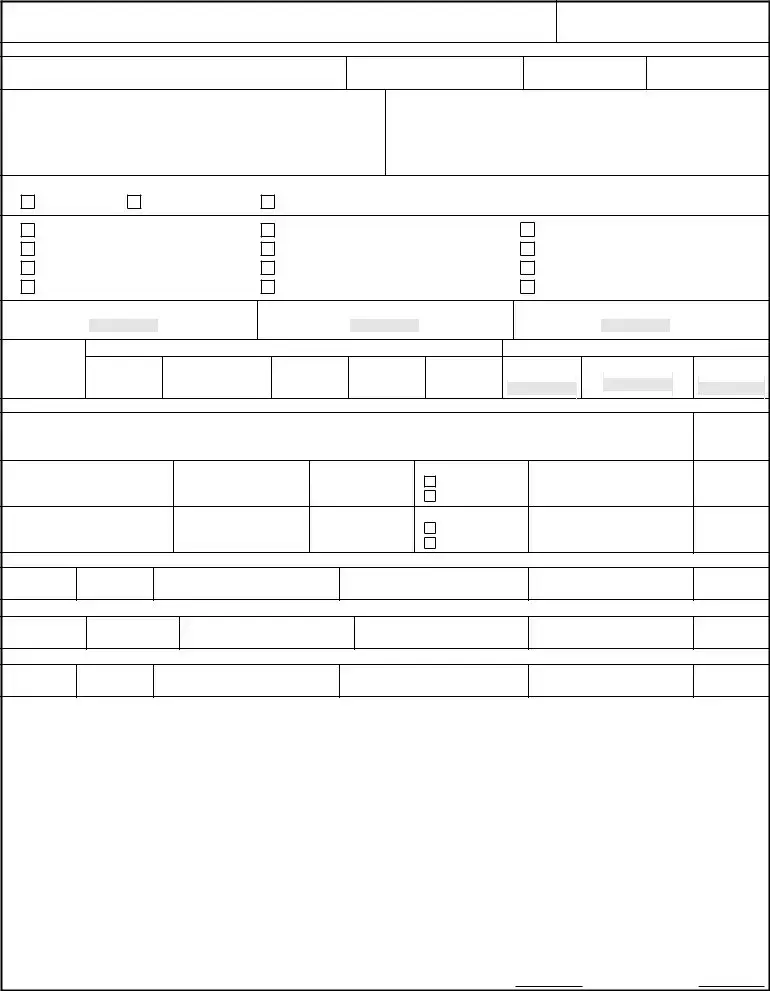What is the purpose of the DA Form 31?
The DA Form 31, also known as the Request and Authority for Leave, serves a critical function within the United States Army. It is used by service members to request and obtain approval for leave, whether it's for vacation, emergency, or other forms of absence. This form is subject to the Privacy Act of 1974 and follows the guidelines outlined in AR 600-8-10. It ensures that all leave requests are formally documented and processed, providing a clear record for both the service member and their commanding officers.
How do I fill out the DA Form 31?
To properly fill out the DA Form 31, you must complete several key sections. Start with PART I - REQUESTOR INFORMATION, where you need to provide your full name, Department of Defense Identification (DoD ID), rank, and the date. Also, include your leave address and contact information for your organization, station, and point of contact, including email and phone number. In the TYPE OF ABSENCE section, you must specify the nature of your leave by ticking the appropriate box. It’s crucial to indicate your leave period accurately in the spaces provided for the dates and total days requested. Finally, signatures from the requestor, supervisor, and approving authority are necessary to validate the form. Make sure all information is accurately entered to avoid any delays in the approval process.
Who can sign the DA Form 31 on behalf of the requestor?
In cases where the requestor is not available to sign the DA Form 31, a supervisor is authorized to sign on their behalf. This provision ensures that requests for leave can still be processed even in the absence of the service member, provided there is sufficient reason for their unavailability. The supervisor's signature must be accompanied by their name, title, and rank/grade, and it indicates their agreement with the information presented in the request for leave. This supports the efficient processing of leave requests while maintaining accountability and proper documentation within the organization.
What happens if a DA Form 31 is disapproved?
When a DA Form 31 is disapproved, the service member will be notified of the decision, typically through their chain of command. The reasons for disapproval should be clearly stated, allowing the service member to understand the considerations taken into account by their commanding officers. It is important for the service member to communicate with their supervisor or approving authority to address any factors that led to the disapproval. Depending on the circumstances, the service member may be advised to modify their leave request accordingly and resubmit the DA Form 31, taking into account any feedback or requirements specified by their commanders.

